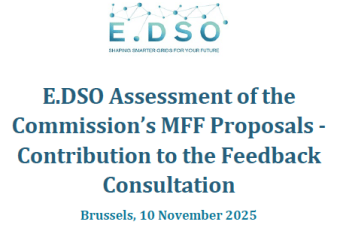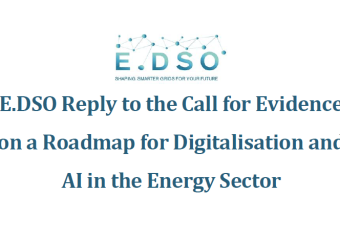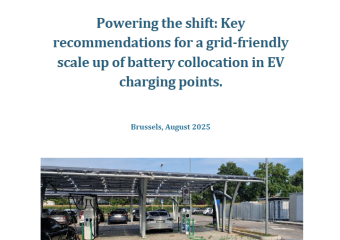Today, E.DSO publishes its Guidance on Distribution Network Tariff Structures. The need to re-think the tariff structures emerges from the energy transition, given the important trends of digitalisation, decarbonisation, and decentralisation. In addition, EU Regulation 2019/943 from the Clean Energy Package also provides requisites for distribution tariffs.
With this document, E.DSO aims to guide National Regulatory Authorities (NRAs), Distribution System Operators (DSOs) and stakeholders in their thinking on future distribution network tariff structures considering potential challenges to the grid. E.DSO experts believe that there is certainly a need for an evolution in tariff structures while acknowledging that there is no ‘one size fits all solution.
E.DSO’s position has always been to recognise that custom-made solutions have the potential to deliver more value than a common European model for distribution network tariffs, considering that national circumstances can differ significantly.
The conclusions outlined in our guidance are:
- Challenges or problems can be a good reason to redesign network tariff structures since with appropriate tariff structures a lot of problems can be prevented.
- One size does not fit all. One common EU model will not help us, nor the customers. The national circumstances are too different.
- Although power is not the only cost driver (time, giving the probability for power to coincide with other powers, is too), the tendency towards more power-based network tariff structures can be understood from the assessment that they reflect network costs and from the possibility to introduce an incentive for customers to distribute consumption over time.
- Since power generation is shifting strongly towards renewables and renewables are following solar and wind, instead of demand, production will not be steered by customers anymore. So, the logic that only consumers pay for the network (because they are steering production) is no longer valid. The new logic is producers (renewable as well as conventional) should pay for the distribution network availability as well and be incentivised to efficient location and usage.
- Incentives for efficient network usage are important, not only to prevent unnecessary reinforcements but also to buy time for the necessary reinforcements. Applying appropriate incentives can offer good opportunities for customers to keep their bills low.
- Network tariffs have no relation to market prices. Sometimes they can even be conflicting with each other. This should be assessed as a necessity, not as a problem.
- P2P energy exchange is between market parties, and customers, of which one of them is acting as a supplier. The DSO is not involved. There is no reason to consider this P2P exchange as a special case when applying network tariffs.
- Concerning tariffs, P2P only have significance when behind one single connection to the grid. In all other situations, without such a single connection, the regular tariffs have to be applied to each individually connected customer.
- Tariffs should be independent of suppliers, but also from the applications behind the meter. Special tariffs for special purposes do not make sense.
To read the guidance in detail, please download the full version.






